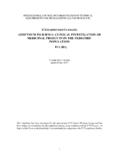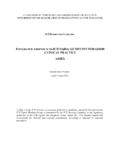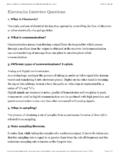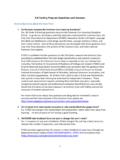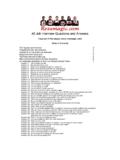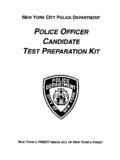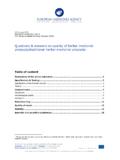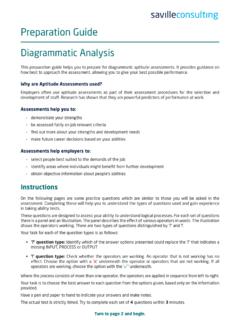Transcription of M4Q Implementation Working Group Questions & …
1 INTERNATIONAL CONFERENCE ON HARMONISATION OF TECHNICAL REQUIREMENTS FOR REGISTRATION OF PHARMACEUTICALS FOR HUMAN USE ICH Secretariat, c/o IFPMA,15, chemin Louis-Dunant, Box 195, 1211 Geneva 20, Switzerland Telephone: +41 (22) 338 32 06 Telefax: +41 (22) 338 32 30 E-mail : Web site : M4Q Implementation Working Group Questions & answers (R1) Current version dated July 17, 2003 In order to facilitate the Implementation of the CTD Quality (M4Q) guideline, the ICH Experts have developed a series of Q&As: M4Q Q&As Document History First Codification History Date New Codification November 2005 M4Q Q&As Approval by the Steering Committee.
2 12 September 2002 M4Q Q&As Current M4Q Questions & answers posted on the web site M4Q Q&As Approval by the Steering Committee of the newly added Questions . 18 July 2003 M4Q Q&As (R1) In November 2005, the ICH Steering Committee adopted a new codification system for ICH Guidelines. The purpose of this new codification is to ensure that the numbering / coding of ICH Guidelines is more logical, consistent and clearer. Because the new system applies to existing as well as new ICH Guidelines a history box has been added to the beginning of all Guidelines to explain how the Guideline was developed and what is the latest version.
3 With the new codification revisions to an ICH Guideline are shown as (R1), (R2), (R3) depending on the number of revisions. Annexes or Addenda to Guidelines have now been incorporated into the core Guidelines and are indicated as revisions to the core Guideline ( , R1). For better comprehension of the M4Q references within the text, please see below the document change history for M4Q guideline. M4Q Document History First Codification History Date New Codification November 2005 M4Q Approval by the Steering Committee under Step 2 and release for public consultation.
4 20 July 2000 M4Q M4Q Approval by the Steering Committee under Step 4 and recommendation for adoption to the three ICH regulatory bodies. 8 November 2000 M4Q Current Step 4 version M4Q Approval by the Steering Committee of Numbering and Section Headers changes for consistency directly under Step 4 without further public consultation. 12 September 2002 M4Q(R1) Common Technical Document - Quality Questions and answers / Location Issues Step 4- version 7- July 17, 2003 Table of Contents 1. Introduction 2. General Issues 3. Associated Information Located in Different Sections 4.
5 Location Issues in Drug Substance: 5. Location Issues in Drug Product: 6. Location Issues in Appendices: 1 1. Introduction This document is intended to provide additional guidance for the preparation of an application file in the CTD-Q format (see section 2: General Issues). It should be read in conjunction with the CTD-Q guideline (Modules 2 and 3). The document also addresses the relationship between linked CTD-Q sections for certain parameters, such as polymorphism, impurities, or particle size (see section 3: Associated Information Located in Different Sections).
6 This document also clarifies location issues; that is, it indicates in which CTD-Q section(s), requested information should be placed (see section 4: Location Issues in Drug Substance, section 5: Location Issues in Drug Product, and section 6: Location Issues in Appendices). This document does not address the content of an application file. For content Questions , refer to regional guidance. 2 2. General Issues Separate or Repeated Sections There can be a number of instances where repeated sections can be considered appropriate.
7 Whenever a section is repeated, it should be made clear what the section refers to by creating a distinguishing title in parentheses following the CTD-Q heading, for example, Drug Substance (Name, Manufacturer A). Drug Substance When more than one drug substance is used in a drug product, information should be presented separately as one complete Drug Substance section followed by other complete Drug Substance sections. In some cases, for a single drug substance, it could be considered appropriate and logical to have information presented in multiple Drug Substance sections.
8 For example, separate sections can be warranted when a single drug substance is made at two different manufacturing sites with differences in the manufacturing processes. However, despite these differences, it is likely that these different processes will be described within the same relevant subsection of If, on the other hand, the differences result in, for example, different specifications, then adding an additional Drug Substance section is recommended (see also regional guidance). Drug Product Depending upon regional requirements, different drug product presentations ( , strengths, container closure types and configurations, formulations) and/ or manufacturing schemes ( , aseptic and terminal sterilization) can be submitted in the same dossier.
9 In general, when a single dossier can be submitted, information for each of the product presentations and manufacturing schemes should be combined and presented together in one Drug Product section, with information for each of the product presentations and manufacturing schemes provided in the Appendices and Regional Information sections, as warranted. For example, if 100 milligram (mg) tablets will be marketed in a bottle and a unit-dose blister package, the information should be presented in one Drug Product section.
10 Where most of the quality information would be identical for the two drug products, the data common to both presentations should appear only once. The information that differs between the two should be presented as separate documents under the appropriate subsections ( , Container Closure System, Stability). In some cases, however, for product presentations or manufacturing schemes that can be included in a single dossier, it is considered more appropriate and logical to have information presented separately.
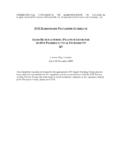
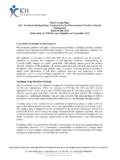
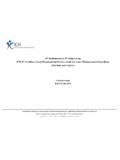
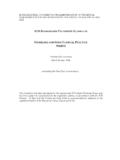
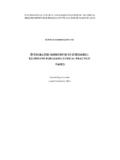
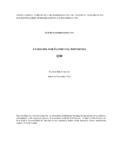
![[ICH E2F] [EXAMPLE DSUR – PHASE III …](/cache/preview/1/3/5/f/e/1/c/f/thumb-135fe1cf2cdb82799c462ad0ea089c48.jpg)
